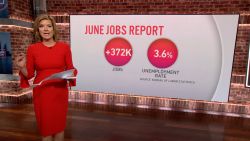Executive Brief
When a company is going through layoffs, women and minority employees don’t always stand an equal chance. Research shows these groups of workers are labeled redundant or non-essential more frequently than their white male colleagues.
Much of the corporate conversation about diversity and inclusion revolves around hiring, recruitment, promotion and work/life balance, says Alexandra Kalev, associate professor of sociology at Tel Aviv University. But there’s another side to the conversation that often doesn’t get addressed until the company hits a rough patch.
“We see that they get in, but they remain in their segregated positions, assigned to support or non-core management jobs or they’re assigned to line management in failing parts of the company, failing lines, struggling locations,” Kalev says. “So that’s not integration. That’s not inclusion. That’s exactly one big reason why they lose their jobs when downsizing comes.”
The divisions
Kalev points to occupational segregation, another element that affects which workers get hit by layoffs first. In certain industries, women and minorities may be concentrated in specific areas like human resources, marketing or administrative support. Because these jobs are not always perceived as essential to operations, they’re often the first to be axed.
“Downsizing is about keeping only the ‘lifesaving’ expenses,” Kalev says. “You want to be ‘lean and mean.’”
Certain fields, like human resources and accounting, have seen great gains in diversity, Kalev points out, but as more jobs are computerized and outsourced, more women and minorities could suffer the consequences.
“If we think about office jobs — secretaries, receptionists — a lot of those things have been automated,” says Chandra Childers, study director at the Institute for Women’s Policy Research. “We’re already seeing potential for that world to change.”
Going forward
In certain workplaces, women and minorities are relatively new hires compared to the majority white male workforce that may have been at the company for years. So when layoff season hits, they’re the ones without the deep connections and longstanding relationships, making them even more vulnerable to job dismissal.
“We need to make sure these women and minorities are integrated into the workplace, not just marginalized,” Kalev says.
Many executives making the decisions about workforce cuts don’t even realize the diversity implications, Kalev says. Instead, they prefer to think of it in cut-and-dry terms: Last in, first out.
“We asked them directly: Do you have any diversity considerations when you downsize? And they very honestly, quickly and clearly said, ‘No,’” she says. “Downsizing is about saving the business. In their minds, they are separate worlds.
But a work culture that truly values diversity and inclusion thinks about these issues before they even arise, Childers says.
Hiring employees as tokens of diversity may make them more vulnerable during layoffs, for example — but a good leader would never hire employees for that reason to begin with, Childers points out. When the time comes to make layoff decisions, they should be conscious of how these cuts could affect their remaining workforce.
“If I’m leading this company and all of my senior people are white males and all the new hires are minorities and women, then I’m not going to use a ‘last hired, first fired’ approach,” Childers says. “I will find something that I can base it on that doesn’t have a disproportionate impact on any group.”




















